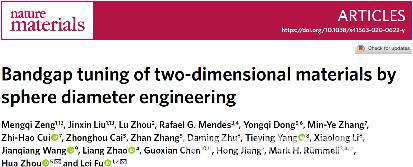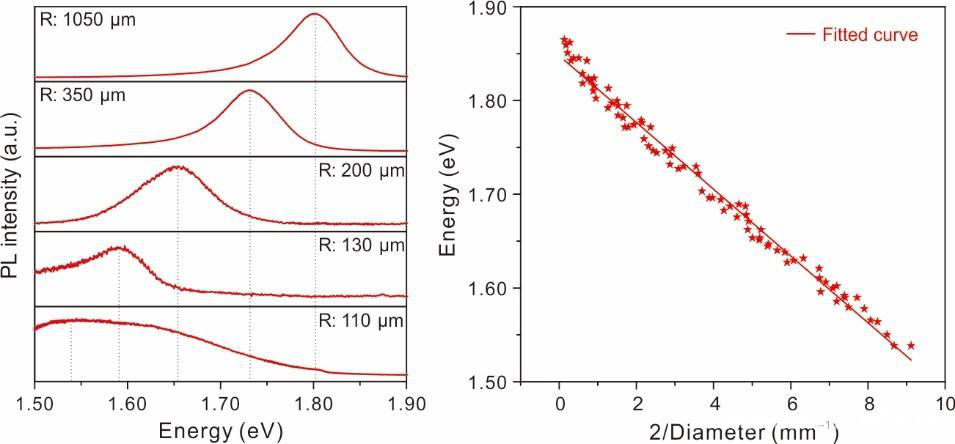Nature Materials recently published the latest research findings of Prof. Fu Lei from Wuhan University’s College of Chemistry and Molecular Sciences. The article, entitled Bandgap tuning of two-dimensional materials by sphere diameter engineering, shows Wuhan University as the first author affiliation.
Zeng Mengqi, associate research fellow, and Liu Jinxin, a PhD student of the class of 2017, both from the College of Chemistry and Molecular Sciences, are co-first authors. Prof. Fu and Zhou Hua from the Argonne National Laboratory in the US are corresponding authors. The research was supported by the National Natural Science Foundation of China, the Sino-German Science Center, Initiative Postdocs Supporting Program, and the President Fund of Wuhan University.

This work proposed a bandgap tuning method that combines high accuracy, reliability and uniformity, offering a generic strategy for industrialization, to help researchers customize low-dimensional materials with particular properties.
As a typical property of two-dimensional materials, the bandgap determines a series of basic physical properties of the materials, such as photon excitation, electron transfer and so on. Therefore, through adjusting the bandgap, the properties of two-dimensional materials can be manipulated, thus realizing the “customization” of the materials. Developing a precise bandgap tuning method can facilitate the construction of adjustable two-dimensional-materials-based electronic and optoelectronic devices, thus promoting the practical applications of two-dimensional materials.
Fu Lei’s team from Wuhan University has long been devoted to precision manufacturing at atomic level on liquid surfaces. In this work, the team focuses on the formation of the liquid substrate into a ball on a non-wetting substrate, and directly introduce the uniform isotropic stress into the two-dimensional MoS2 crystals grown on it. The magnitude of the stress is determined by the sphere radius, while the one-to-one correspondence between the material bandgap and the curvature of spherical substrate range as large as 360 meV where an ideal linear working curve can be established. Therefore, a precise manipulation of the crystal quality can realize a bulk customization of two-dimensional materials with particular bandgap. Meanwhile, manipulating the deformation degree of liquid substrate can regulate the slope of the established linear working curve, proving the highly designable nature of bandgap regulation strategy .

The linear working curve based on the one-to-one correspondence between bandgap and substrate curvature
In addition, the two-dimensional MoS2 bandgap tuning realized by spherical diameter engineering is of high uniformity, whether the crystals grow on the different crystal balls with the same diameters or those located in different places on the same crystal ball, or for a complete two-dimensional MoS2 crystal The bandgap distribution shows a high level of uniformity.
The research is supported by multiple institutions: Mark H. Rümmeli’s team at the Leibniz Institute for Solid State and Materials Research, Dresden characterized the samples using aberration-corrected high-resolution transmission electron microscopy. Zhou Hua’s team at the Argonne National Laboratory synchrotron radiation of the US and the team at the Shanghai Institute of Applied Physics, Chinese Academy of Sciences characterized lattice deformation of the samples via grazing incidence X-ray diffraction spectra based on synchrotron radiation. Jiang Hong’s team at Peking University carried out the first-principle calculation. Associate Professor Chen Guoxian from Wuhan University’s School of Mathematics and Statistics provided theoretical simulation support for liquid deformation.
Article Link: https://www.nature.com/articles/s41563-020-0622-y
Rewritten by: Cao Siyi
Edited by Shen Yuxi, Sylvia and Hu Sijia